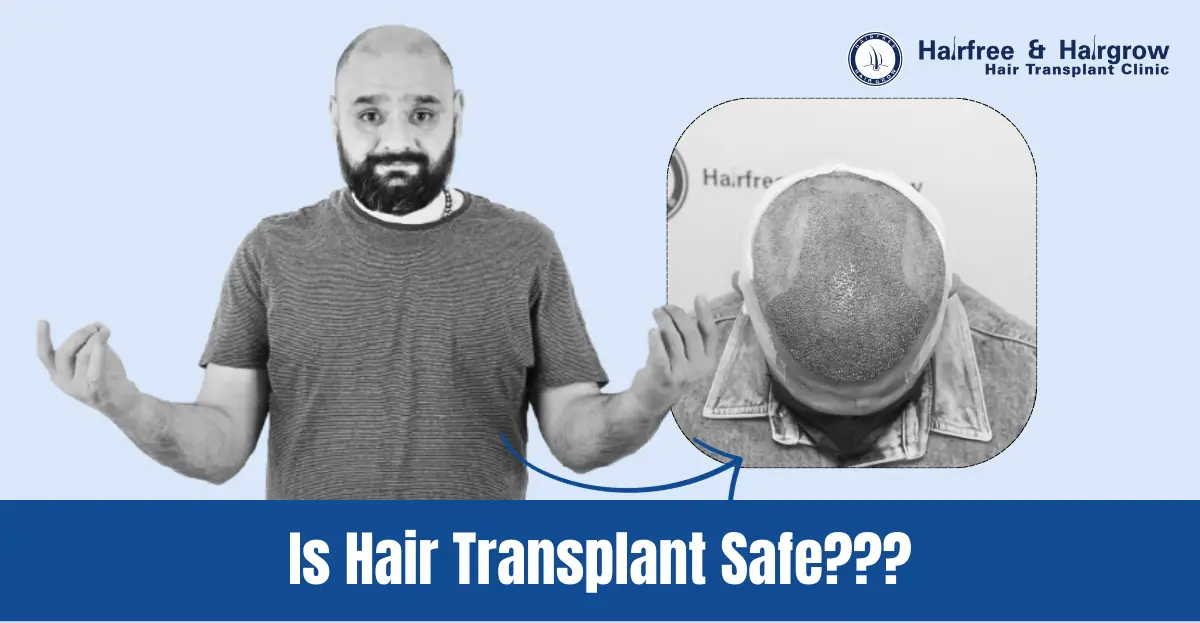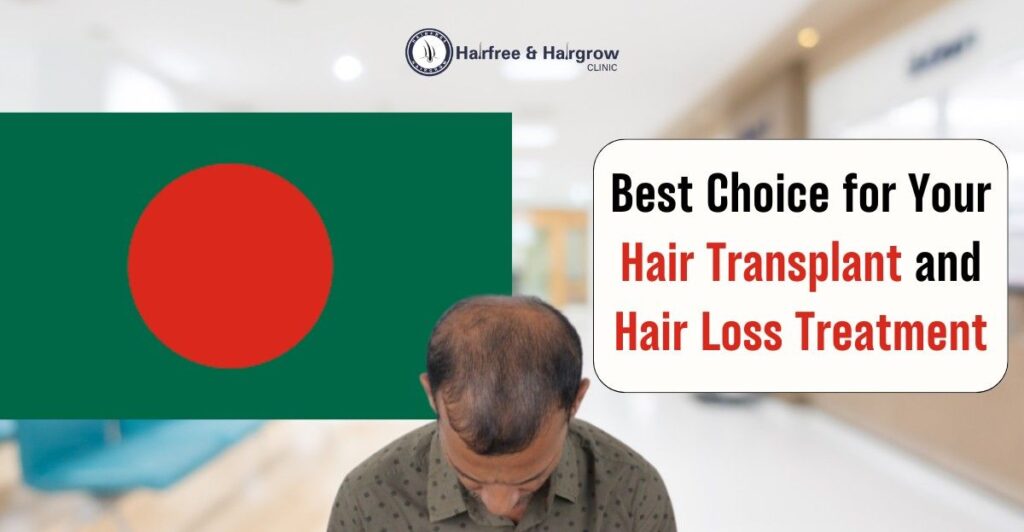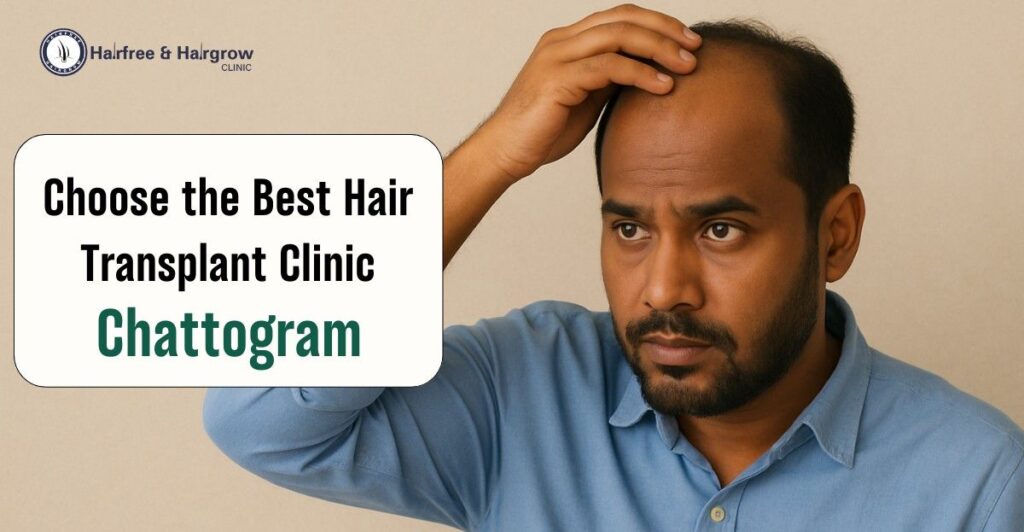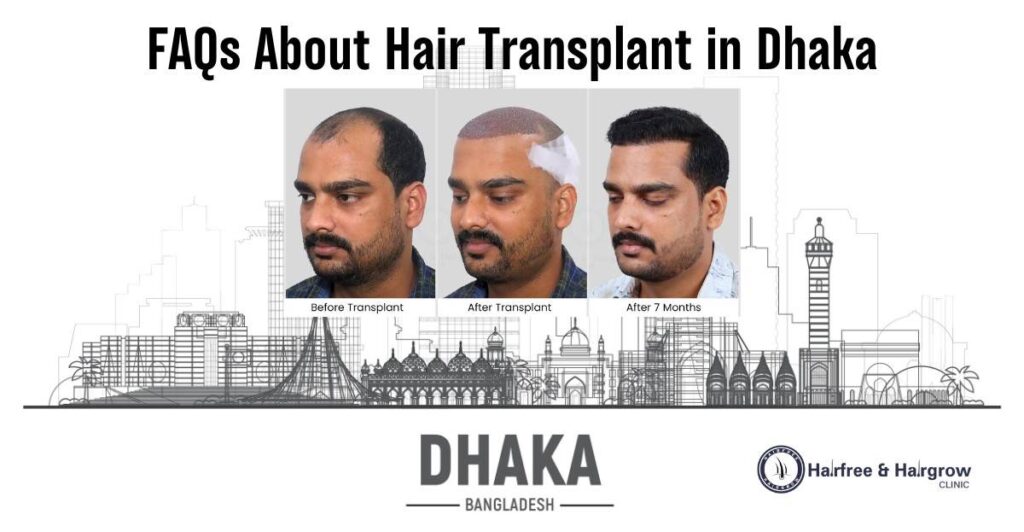Hair loss isn’t just about looks; it often impacts confidence and daily life. From genetics to medical conditions, it’s a journey many face. If you’re considering a hair transplant, you may be wondering, “Is hair transplant safe?”
The internet is full of mixed stories, ranging from success stories to exaggerated complications. In this blog, we’ll dive into the safety of hair transplant procedures, weigh the risks and benefits, and help you make an informed decision.
Table of Contents
Factors That Ensure Hair Transplant Safety
The safety of a hair transplant largely depends on the following factors:
- Expertise of the Surgeon: Choosing a top hair transplant surgeon with a proven track record significantly reduces risks.
- Technique Used: Advanced methods like FUE minimize complications compared to traditional techniques.
- Clinic Standards: Reputable clinics prioritize hygiene, use state-of-the-art equipment, and follow stringent medical protocols.
- Patient Health: Pre-surgery evaluations ensure you’re a suitable candidate for the procedure.
When performed by skilled professionals in a well-equipped clinic, hair transplantation is considered one of the safest cosmetic procedures.

Common Side Effects of Hair Transplant
1. Swelling
- Cause: Fluid accumulation around the forehead and eyes due to trauma from the procedure.
- Duration: Peaks around 2-3 days post-surgery and subsides within 2-5 days.
- Treatment:
- Apply a cold compress for 15-20 minutes several times a day.
- Keep your head elevated while resting.
- Use anti-inflammatory medications as prescribed.
2. Pain or Discomfort
- Cause: Inflammation and sensitivity at donor and recipient sites.
- Duration: Mild and temporary.
- Treatment:
- Take pain relievers provided in your post-op kit.
- Avoid heavy lifting or activities that strain the scalp.
3. Bleeding
- Cause: Small incisions made during the procedure.
- Duration: Common in the first 24-48 hours.
- Treatment:
- Apply gentle pressure with a clean cloth or gauze.
- Avoid activities that increase blood flow to the scalp.
- Contact your doctor if bleeding persists.
4. Redness
- Cause: Inflammatory response to surgery.
- Duration: Usually fades within a week.
- Treatment:
- Keep the area clean and follow post-op instructions.
- Contact your doctor if redness worsens or is accompanied by pus.
5. Scabbing and Crusting
- Cause: Healing of small incisions.
- Duration: Scabs fall off within 10-14 days.
- Treatment:
- Clean gently with a mild shampoo and lukewarm water.
- Avoid picking or scratching the scabs.
6. Itching
- Cause: Healing process and dryness at transplant sites.
- Duration: Temporary.
- Treatment:
- Clean with mild shampoo and lukewarm water.
- Use soothing topical solutions like aloe vera or coconut oil.
- Stay hydrated to minimize dryness.
Less Common Side Effects
1. Infection
- Cause: Bacteria entering transplant sites.
- Treatment:
- Maintain cleanliness as per doctor’s instructions.
- Use prescribed antibiotics.
- Seek medical attention for symptoms like pus, swelling, or foul odor.
2. Folliculitis
- Cause: Inflammation of hair follicles from bacteria, fungus, or irritation.
- Treatment:
- Avoid scratching and keep the area clean.
- Use topical creams as recommended by your doctor.
3. Numbness
- Cause: Temporary disruption of nerves during surgery.
- Duration: Resolves within weeks.
- Treatment:
- Patience, as sensation usually returns naturally.
- Consult your doctor if numbness persists.
4. Hiccups
- Cause: Likely due to anesthesia, medications, or stress.
- Duration: Resolves within a few days.
- Treatment:
- Relaxation techniques like deep breathing.
- Medication if hiccups are severe.
5. Scarring
- Cause: Overactive healing response or improper technique.
- Treatment:
- Choose an experienced surgeon to minimize risk.
- Options like corticosteroid injections, silicone gel sheets, or laser therapy for excessive scarring.
Why Choose the Best Clinic and Doctor for a Safe Hair Transplant?
The clinic you choose plays a pivotal role in ensuring a safe and effective hair transplant. Clinics like Hairfree & Hairgrow are renowned for their expertise, advanced techniques, and patient-centered approach. Our commitment to safety and precision ensures optimal results with minimal discomfort.
For those seeking hair transplant in Bangladesh, Hairfree and Hairgrow Bangladesh offers world-class services at competitive prices. We employ the Advanced FUE method, performed by highly qualified surgeons, to deliver exceptional outcomes.
Success Rate and Benefits of Hair Transplants
The success rate of hair transplants is a common concern for many people. Those considering the procedure often wonder about its effectiveness and whether it will deliver the desired results. These concerns are completely valid because everyone wants to ensure their investment in hair restoration is worth it.
With advancements in techniques and technology, the success rate of hair transplants has improved significantly. In most cases:
- The success rate of hair transplants is around 90% to 95%, depending on factors like the surgeon’s expertise and the clinic’s facilities.
- Properly performed transplants typically show strong hair growth within 6 to 12 months.
Here’s a breakdown of the key benefits:
- Transplanted hair follicles are genetically resistant to hair loss, making it a lifelong solution.
- With advanced techniques like FUE, the results look completely natural, blending seamlessly with existing hair.
- Restored hair often leads to a significant boost in self-esteem, helping individuals feel better about their appearance.
- Unlike wigs or temporary solutions, transplanted hair grows naturally and requires no special care. You can wash, cut, and style it like your original hair.
- While the initial investment may seem high, the permanent results eliminate the ongoing costs of temporary solutions like hairpieces or medications.
Real-Life Examples and Testimonials
Patients who’ve undergone hair transplants often share inspiring stories. For instance, several individuals at clinics in Bangladesh have reported significant transformations. One patient noted, “After choosing Hairfree and Hairgrow Bangladesh, my confidence skyrocketed. The entire process was smooth, and the results exceeded my expectations.”
Such testimonials highlight the importance of selecting a reputable clinic with a history of success.
Conclusion
So, is hair transplant safe? Absolutely—when performed by skilled professionals in a reputable clinic. While minor risks exist, they are manageable with proper care and expertise. Hair transplantation offers a long-term solution to hair loss, transforming lives by restoring confidence and appearance.
If you’re ready to embark on your hair restoration journey, Hairfree & Hairgrow Bangladesh is here to help. Their advanced techniques, expert team, and patient-centric care make them a top choice for safe and effective hair transplants.
FAQ
While rare, risks like infection or uneven growth can occur. Choosing a reputable clinic minimizes these risks.
Yes, the Advanced FUE method is minimally invasive, reducing scarring and recovery time, making it a safer choice.
Select a qualified surgeon, follow post-operative care tips, and choose a clinic known for its high standards, such as Hairfree & Hairgrow.

Written By
Medical Officer & Hair Transplant Surgeon
Dr. Nazmin Sultana Nipa is a distinguished hair transplant doctor in Bangladesh, known for her advanced skills in hair restoration. As a Medical Officer and Hair Transplant Surgeon, Dr. Nipa combines her extensive experience in the field with a focus on transparency and patient-centered care.
Disclaimer
We’ve made all possible efforts to ensure that the information provided here is accurate, up-to-date and complete, however, it should not be treated as a substitute for professional medical advice, diagnosis or treatment. See Detailed Disclaimers Here.



